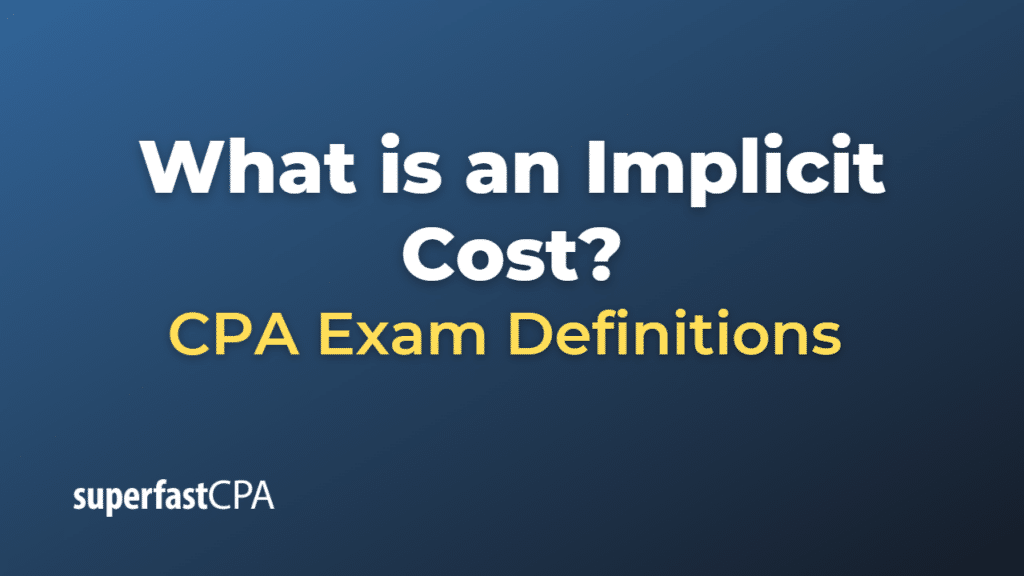Implicit Cost
Implicit costs, also known as imputed, implied, or notional costs, are the opportunity costs that a company incurs when it uses resources that it already owns, rather than purchasing or renting them from others. These costs represent the potential benefits an entity could receive if it chose an alternative course of action with its resources.
Unlike explicit costs, which involve direct out-of-pocket payments for resources (like wages, rent, and materials), implicit costs do not involve any actual cash expenditure. Therefore, they are not recorded in the traditional accounting system and do not appear directly on the income statement. However, they are important in economic analysis and decision making as they contribute to a company’s economic cost (which is the sum of explicit and implicit costs).
For example, if an entrepreneur uses a property they own to set up a business, the implicit cost is the rental income they forgo by not leasing that property to a tenant. Similarly, if the entrepreneur devotes their own time to the business, the implicit cost is the salary they could have earned elsewhere. These implicit costs are real costs to the business, even though they don’t involve a cash outlay. They reflect the opportunity cost of using resources in one way, rather than the next best alternative way.
Example of an Implicit Cost
Let’s consider an example with John, who decides to start his own bakery.
John owns a building in a busy commercial area. Instead of renting the building out to a tenant for $3,000 a month, John decides to use it for his bakery business. The forgone rental income ($3,000 per month) is an implicit cost of running the bakery. Even though John doesn’t make a payment for using his own building, there is an opportunity cost involved, which is the income he would have earned from renting out the building.
Furthermore, prior to starting his bakery, John was employed at a corporation where he was earning $60,000 per year. By deciding to run his bakery, he’s giving up this salary. This forgone salary is another implicit cost.
These implicit costs aren’t accounted for in the company’s financial books, because no actual cash transaction takes place. But if John were conducting an economic analysis of his bakery’s profitability, he would need to consider these implicit costs, along with any explicit costs (like ingredient costs, utility bills, and employee wages), to get a true picture of the economic profit or loss.













